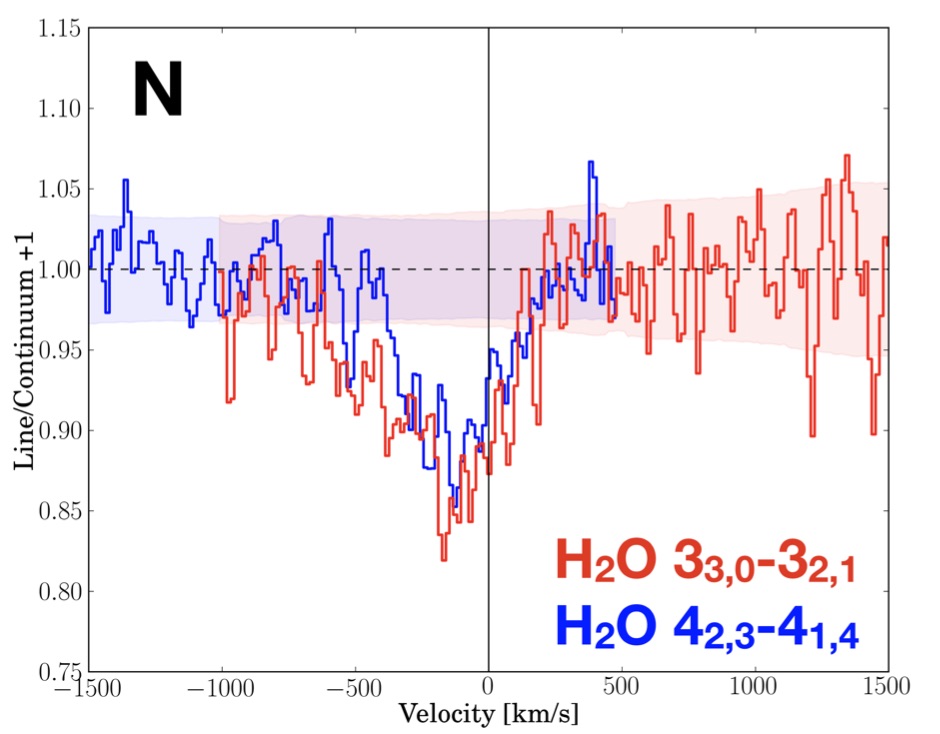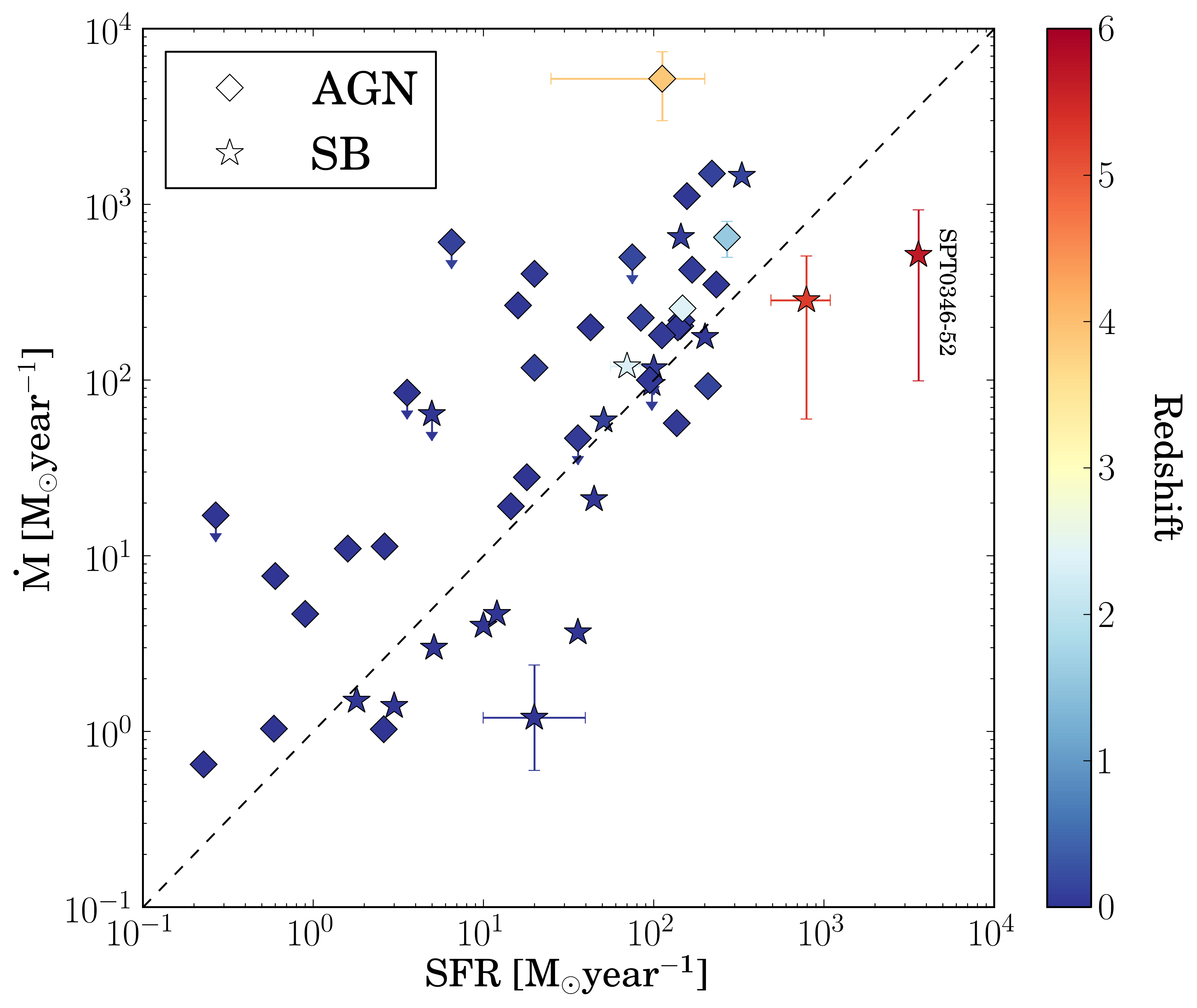
Submitted by Administrator on Fri, 13/12/2019 - 17:08
The Detection of a Molecular Outflow in a Primeval Starburst Galaxy
Using the Atacama Large Millimeter/submillimeter Array, a team led by scientists from the Kavli Institute have observed two water absorption lines towards a starburst galaxy (i.e., forming stars at a rate ~4000x faster than the Milky Way) in the early Universe, or about one billion years after the Big Bang, finding evidence for outflowing gas (Figure 1).
The distinct shape of these blueshifted water lines, in addition to the extremely hot and dense environments required for their detection, indicates that they originate from a massive nuclear outflow.
When the outflow rate and star formation rate of this object are compared to those of local galaxies and other high-redshift objects (see Figure 2), it is apparent that the outflow detected here is at the highest redshift and originates from the object with the highest star formation rate. However, the outflow rate is much less than the star formation rate, suggesting that this outflow does not represent a dominant form of mass loss in this system. Thus, the galaxy is likely undergoing a period of runaway star formation.
This work was led by Gareth Jones, a postdoctoral research associate at the Kavli Institute and the results has been published in Astronomy & Astrophysics Letters:
- Online paper: https://www.aanda.org/articles/aa/abs/2019/12/aa36989-19/aa36989-19.html
- arxiv link: https://arxiv.org/abs/1911.09967

Figure 1: Absorption profile of the two water transitions observed towards the far-infrared continuum emission of the distant starburst galaxy (SPT 0346-52).
 Figure 2. Molecular outflow rate (Ṁ) as a function of star formation rate (SFR) for galaxies with detected molecular outflows. Outflows driven by AGNs are shown by diamonds, while those driven by starbursts are shown by star symbols. Each object is coloured according to its redshift. The range and average of best-fit outflow rates of our object (SPT 0346-52) are shown. The molecular outflow detected in this work is in the most powerful starburst. Additional data include both low-redshift (z<0.2) and high-redshift (z~1.5-5.3) sources. A representative uncertainty for all low-redshift sources (±0.3 dex) is shown for one such source.
Figure 2. Molecular outflow rate (Ṁ) as a function of star formation rate (SFR) for galaxies with detected molecular outflows. Outflows driven by AGNs are shown by diamonds, while those driven by starbursts are shown by star symbols. Each object is coloured according to its redshift. The range and average of best-fit outflow rates of our object (SPT 0346-52) are shown. The molecular outflow detected in this work is in the most powerful starburst. Additional data include both low-redshift (z<0.2) and high-redshift (z~1.5-5.3) sources. A representative uncertainty for all low-redshift sources (±0.3 dex) is shown for one such source.


